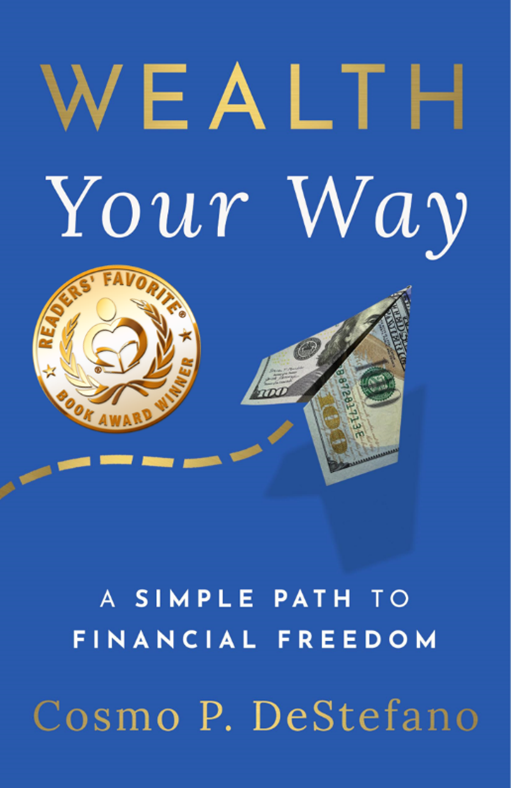Planning for prosperity
With 2025 just around the corner, now is the perfect time to hit “pause” and take stock of your financial journey. Think about where your money went this year and how it aligned with your values and goals. Did your spending reflect what truly matters to you?
Maybe you tackled a home improvement project, splurged on a once-in-a-lifetime vacation, or prioritized saving for your child’s education. Were those choices part of the plan, or did they happen on the fly? Did you stick to your budget—or did it slip through your fingers?
This is also a moment to reflect on the big life changes that may have shifted your financial picture. A new baby, a career move, or retirement can reshape your priorities and demand a fresh look at your strategy.
If you don’t have a plan yet, no worries—it’s never too late to start. Whether you’re stretching every dollar or enjoying a financial surplus, crafting a plan gives you clarity and control. It’s about aligning your spending with your goals for the year ahead and your vision for the future.
Here’s the thing: true financial freedom isn’t about chasing an ever-elusive number. It’s about understanding and defining enough. And without clear goals and a thoughtful plan, figuring out what “enough” means for you is exponentially harder.
So, as the New Year approaches, why not take this opportunity to plan for your prosperity? The path to financial freedom starts with reflection, intention, and action.
Just. get. started.
Check-in on your investments
· Replenish your emergency fund
If you tapped into your emergency fund during the year, it is a good time to refill it, or if you don’t have an emergency fund, start one. Having these funds at the ready can help you cover surprise expenses, such as car repairs or medical expenses, without relying on high-interest credit cards or selling long-term investments.
Is your cash working for you? Borrowing rates remain stubbornly high while savings rates have decreased slightly. But with today’s money market funds and CDs still paying 4%+, your cash can provide not only an emergency cushion but a reasonable return as well.
· Top off retirement contributions
If your financial situation allows, it may be a good idea to increase your contributions to your retirement account(s). This can be a good annual practice until you’re contributing the maximum amount allowable to an IRA, 401(k), 403(b), or their Roth counterparts.
For example, if you have access to a 401(k) through your employer, you’ll have until the end of the year to contribute up to the $23,000 limit for 2024. People above the age of 50 can make additional catch-up contributions of up to $7,500 for a total of $30,500.
If you have a health savings account (HSA), consider maxing out that contribution as well--$4,150 for an individual ($5,150 if age 55 or older) and $8,300 for a family ($9,300 if age 55 or older).
Whether you use the HSA for long-term saving or near-term spending, it is triple tax-advantaged: Funding is tax deductible, growth isn’t taxed, and withdrawals are tax-free if spent on qualified medical expenses.
[Pro-tip: If you are a prodigious accumulator of wealth, most HSA plans have investment alternatives, but research has found that only 12% of account holders invest in assets other than cash. Explore your options.]
Tax planning strategies for high-income earners
· Consider a mega-backdoor Roth conversion…or its smaller cousin
This tax planning strategy potentially allows high-income earners to put away even more in a Roth account by sidestepping the income limits of a Roth IRA and the tax consequences of a regular Roth conversion. If permitted by your workplace retirement plan, you would first max out your normal 401(k) contributions then contribute after-tax dollars up to the 2024 overall account limit (including employer matches) of $69,000 ($76,500 if 50 or older). You’ll want to rollover these funds (“in-service distribution”) as quickly as possible to a Roth 401(k) or to a Roth IRA to minimize any tax on investment returns.
If your employer-sponsored retirement plan doesn’t allow both (a) after-tax contributions, and (b) “in-service distributions” for the mega-backdoor Roth, you could consider the smaller version, known simply as a backdoor Roth. With this strategy, you contribute after-tax dollars (up to $7,000; or $8,000 if age 50 or older) to your traditional IRA and then immediately convert it to a Roth IRA. (Caveat: if you have any traditional IRAs with a previous balance, this gets more complicated and could trigger a tax liability on the conversion.)
[Pro-tip: A little short of cash during the year-end holidays? Use the IRA extension. You can contribute to your IRA through the tax filing deadline next year and it will count towards the previous year. That is, up until April 15, 2025, you can designate an IRA contribution as counting against the limit for tax year 2024 or 2025.]
· Tax-loss harvesting
As you are plotting year-end moves, inevitably you will hear about investors considering tax-loss harvesting in their taxable brokerage accounts. “Harvesting” refers to the selling of investments at a loss to offset capital gains from other investments. You then use the sale proceeds to buy a different investment so overall you stay invested in the market. The last point is critical—it’s what distinguishes the harvesting strategy from market timing.
[Pro-tip: Harvesting can help minimize taxes but be mindful of something called a “wash sale.” The IRS is fine with you selling at a loss, but it doesn’t like it when you sell at a loss and then quickly buy back the same investment (or a ‘substantially identical’ investment). In fact, buying back the investment within 61-days (beginning 30 days before the sale and ending 30 days after the sale), can trigger a wash sale and defer the loss.]
It’s also a good time to pause and reflect on the premise of this strategy. Harvesting implies you have losses to be harvested. With the markets once again approaching all-time highs, why do you have underwater investments in the first place?
Think about it. If you had been purchasing “the market” (e.g., an S&P 500 ETF or similar broad-based index funds), then you would not have a significant loss on your fund shares since the market is approaching its highest level now!
This means that losses you do have are likely in your individual stock selections. This is just a friendly reminder that picking individual stock winners is difficult (even for professionals) and a humbling experience.
Charitable giving
· Bunch your donations
If you plan to donate the same amount of money each year, consider “bunching” the donations into a single year. This could increase your potential itemized deduction for that year.
· Donate appreciated assets
If you have large unrealized capital gains, rather than selling and donating the cash, consider donating the appreciated assets. If you itemize, you can deduct the full fair market value of the appreciated assets, and you won’t need to report the gain as taxable income.
[Pro tip: For large gifts, consider using a donor-advised fund to spread out the giving while simultaneously taking advantage of “bunching.”]
Block out the noise
This month the ‘news’ stories will start to appear touting the “best-performing investments of 2024.” Making portfolio decisions based on headlines is like buying a house based on the color of the front door.
Don’t chase the hot hand, the hot stock, the hot story. Stay calm and remain cool. Have faith in your planning process.
Don’t be too quick to jump into the high flyers or dump the underperforming ones. Twelve months seems like a long time but with investing, that’s a short look. Often, today’s shooting stars become tomorrow’s laggards and vice versa. There are good reasons for changing between investments but chasing performance isn’t one of them.
Some of the above strategies can be tricky, so consider speaking with a professional.
Above all, remember that investing is a tool, not a plan.
Review (or create) your financial plan, make any necessary adjustments, and then get back to living your best life now.
As always, invest often and wisely. Thank you for reading.
The content is for informational purposes only. It is not intended to be nor should it be construed as legal, tax, investment, financial, or other advice. It is merely my own random thoughts.
The best way to spread the word about a book you enjoyed is to leave an honest review. Thank you for taking the time to click here and posting your review of Wealth Your Way. Your review will help other readers explore their own path to wealth!






